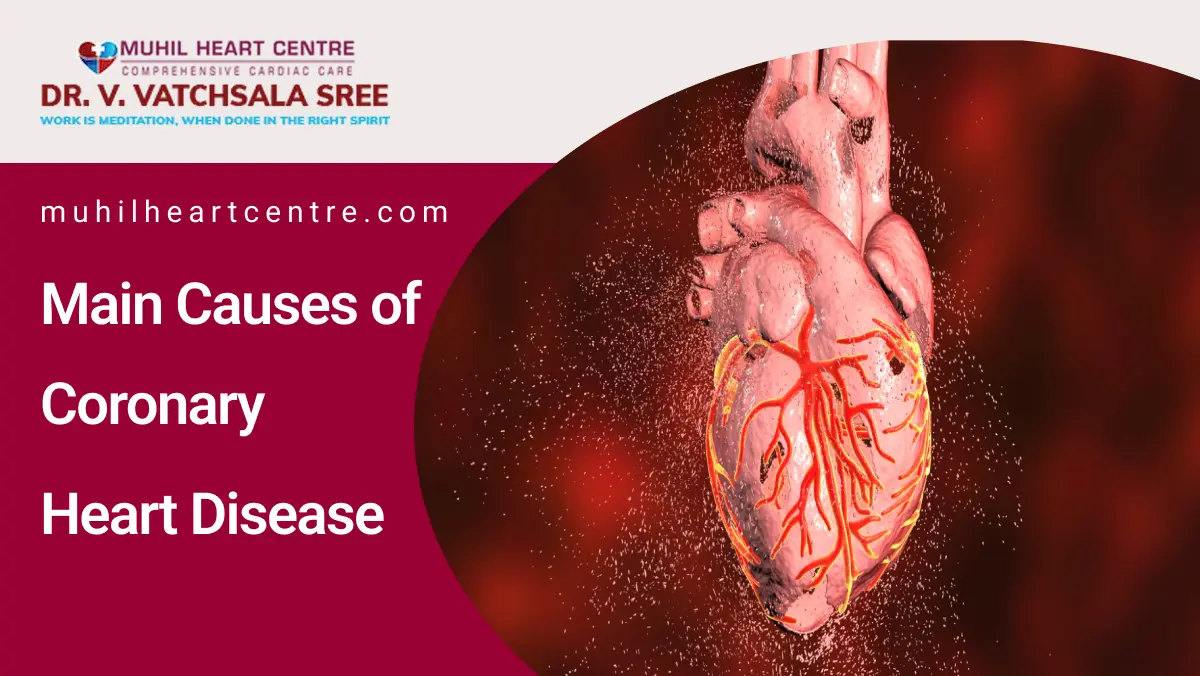Main causes of coronary heart disease encompass several factors that significantly contribute to the development of this cardiovascular condition. Coronary heart disease (CHD) remains a leading cause of mortality worldwide, impacting millions each year. Understanding the primary causes is pivotal in preventing its onset and managing risks effectively.
What is coronary heart disease?
Coronary heart disease (CHD), also known as coronary artery disease (CAD), is a prevalent cardiovascular condition characterized by the narrowing or blockage of coronary arteries. These arteries supply oxygen-rich blood to the heart muscles. When plaque buildup (atherosclerosis) occurs in the arteries, it restricts blood flow to the heart. This restriction can lead to chest pain (angina), shortness of breath, or in severe cases, heart attacks. CHD develops gradually over time and is often associated with lifestyle factors such as high blood pressure, high cholesterol, smoking, and diabetes. Understanding CHD is crucial for adopting preventive measures and managing risk factors to promote heart health.
Main Causes of Coronary Heart Disease
Let us describe the main causes of coronary heart disease. They are
High Blood Pressure
- The primary cause of coronary artery disease is the buildup of plaque inside the coronary arteries. This plaque is primarily composed of cholesterol, fat, and other substances found in the blood. Over time, this buildup can narrow the arteries, reducing blood flow to the heart muscle. When plaque ruptures or a blood clot forms in a narrowed artery, it can lead to a heart attack or other complications related to coronary heart disease.
- In the context of CHD, high blood pressure contributes significantly to the deterioration of artery walls, making them more susceptible to damage. This damage triggers an inflammatory response and encourages the accumulation of plaque (atherosclerosis) within the arteries. Over time, the buildup of plaque narrows the arteries, reducing the flow of oxygen-rich blood to the heart. Understanding and addressing high blood pressure is crucial in managing one of the main causes of coronary heart disease and mitigating its impact on heart health.
- Elevated blood pressure increases the workload on the heart, forcing it to pump harder to circulate blood throughout the body. This strain on the heart can lead to its enlargement (hypertrophy) and eventually weaken the heart muscle, elevating the risk of heart failure or heart attacks.
High Cholesterol Levels
- The primary cause of coronary artery disease (CAD) is the accumulation of plaque within the coronary arteries. This plaque is mainly composed of cholesterol, especially elevated levels of LDL cholesterol, often termed as “bad” cholesterol. LDL cholesterol tends to build up along the inner walls of arteries, initiating the formation of plaque.
- In the context of CHD, excessive LDL cholesterol plays a pivotal role in the development of atherosclerosis. This condition involves the accumulation of plaque inside the coronary arteries, leading to their narrowing and impeding proper blood flow to the heart. This restriction in blood flow diminishes the oxygen supply to the heart muscle, potentially resulting in chest pain (angina) or, in severe cases, a heart attack. Addressing and managing high LDL cholesterol levels are essential in combating one of the main causes of coronary heart disease and safeguarding heart health.
Smoking and Tobacco Use
Smoking and tobacco use significantly elevate the risk of developing coronary heart disease (CHD) and contribute to its progression. The harmful substances in tobacco smoke damage the blood vessels and promote the buildup of fatty deposits (plaque) within the arteries, accelerating the development of atherosclerosis. Addressing smoking habits and avoiding tobacco use are crucial steps in reducing one of the main causes of coronary heart disease and preserving heart health.
In the context of CHD, smoking has multiple detrimental effects:
- Plaque Formation: Chemicals in tobacco smoke damage the inner lining of arteries, making it easier for plaque to accumulate, narrowing the arteries and impeding blood flow to the heart.
- Blood Clot Formation: Smoking triggers the formation of blood clots, which can obstruct blood flow in the coronary arteries, leading to heart attacks.
- Increased Heart Rate: Smoking raises heart rate and blood pressure, straining the heart and elevating the risk of cardiovascular complications.
Diabetes Mellitus
- Association: Uncontrolled diabetes heightens the risk of CHD due to increased blood sugar levels damaging arteries.
- Control: Managing blood sugar levels through diet, exercise, and medication helps reduce CHD risk.
Sedentary Lifestyle
- Impact: Lack of physical activity contributes to obesity, high blood pressure, and unfavorable cholesterol levels.
- Remedy: Regular exercise promotes heart health, reducing CHD risk factors.
Unhealthy Diet
- Influence: Poor dietary choices, high in saturated fats, trans fats, and processed foods, contribute to plaque buildup.
- Change: Opt for a balanced diet rich in fruits, vegetables, whole grains, and healthy fats to support heart health.
Stress and Mental Health
- Effect: Chronic stress impacts heart health, increasing the risk of CHD.
- Management: Stress-reduction techniques, counseling, and a support network are beneficial.
Genetic Factors
- Inheritance: Family history of CHD or genetic predisposition can heighten susceptibility.
- Precaution: Awareness of family history aids in early intervention and management.
Conclusion
Understanding the main causes of coronary heart disease empowers individuals to make informed lifestyle choices and seek necessary medical guidance for prevention and management. Prioritizing a healthy lifestyle, including a balanced diet, regular exercise, stress management, and avoidance of harmful habits like smoking, plays a pivotal role in reducing the risk factors associated with CHD.

